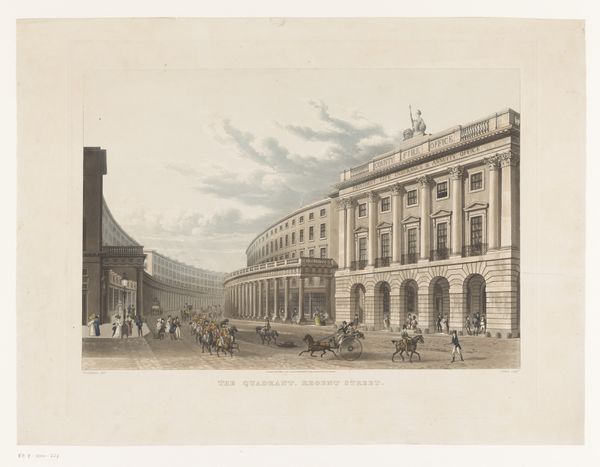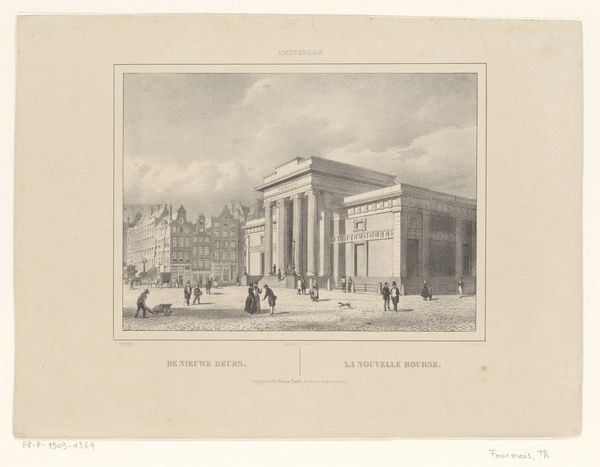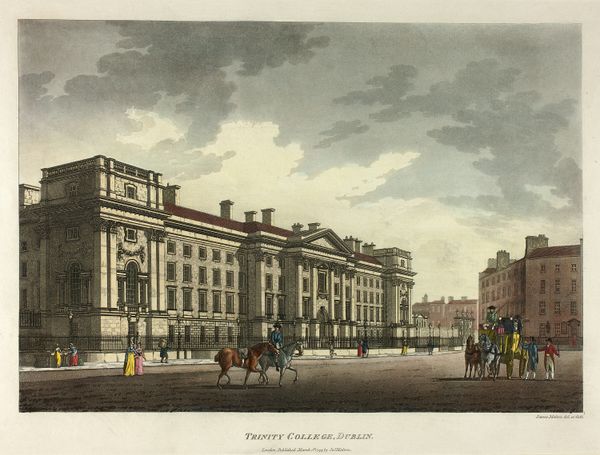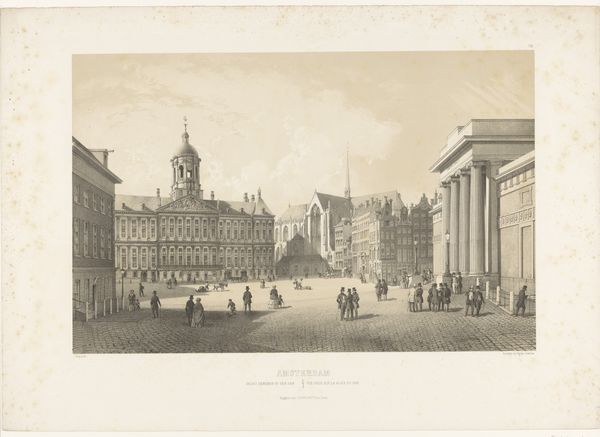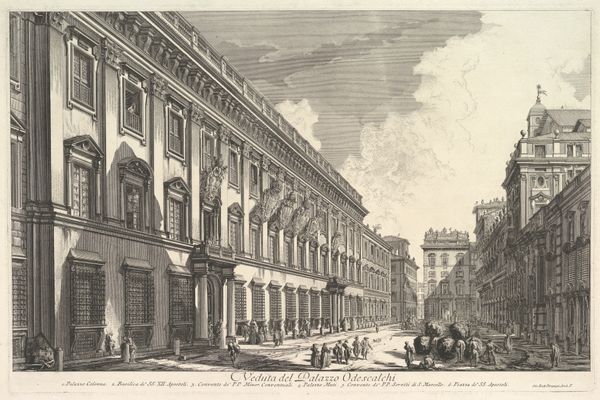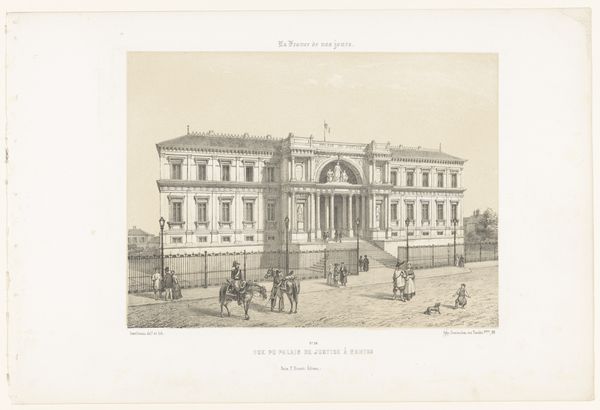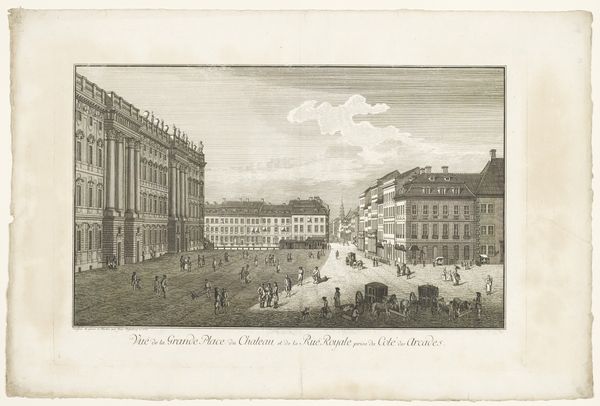
drawing, print, paper, architecture
#
drawing
#
neoclacissism
# print
#
landscape
#
paper
#
cityscape
#
architecture
Dimensions: 259 × 370 mm (image); 315 × 425 mm (plate); 420 × 550 mm (sheet)
Copyright: Public Domain
Curator: Let's discuss James Malton's "The Parliament House - Dublin," likely created around 1793, now residing at the Art Institute of Chicago. It’s rendered as a print, employing both drawing and paper. My first impression is how serene it appears despite being a depiction of political power. Editor: I see what you mean. It has a calming effect through its balanced composition. The architectural forms, with those stately columns and arches, evoke Neoclassical ideals of order and clarity, framing the everyday interactions. Curator: Absolutely. Neoclassicism was all about harking back to the perceived glories of ancient Greece and Rome. Malton places the Parliament House as a symbol of enlightened rule, echoing republican values that were very much in the air during the late 18th century. The design invites the population to actively observe and take part in governance. Editor: And it succeeds visually. The geometry is softened, not just by the somewhat hazy light but through the casual figures populating the foreground. The contrast between the rigid architecture and organic arrangement of figures creates an interesting visual rhythm. The light tonality helps here too, making the building look like a stage for the Dublin’s everyday activity. Curator: Indeed, while the architecture conveys power and permanence, the people underscore the parliament's very purpose: service to its populace. These elements together present the political scene as harmonious. We might also consider the print's role within that society; mass-produced images of buildings and people facilitated conversations and understandings about a space. Editor: It's intriguing how he contrasts the monumentality of the building with the everyday scale of life happening around it. Also notice that subdued palette: creamy whites, faded blues, touches of muted greens. It all enhances that sense of historical distance while maintaining this visual harmony you talked about. Curator: Reflecting on this artwork, it's fascinating to see how Malton portrays power within the framework of civic life during this era, especially as the actual realities might have been considerably more complicated. Editor: Yes, considering the composition alongside Malton’s tonal qualities highlights both the constructed image of ideal governance but with an inherent sense of softness and light, like the potential of Neoclassical ideals meeting everyday society.
Comments
No comments
Be the first to comment and join the conversation on the ultimate creative platform.


